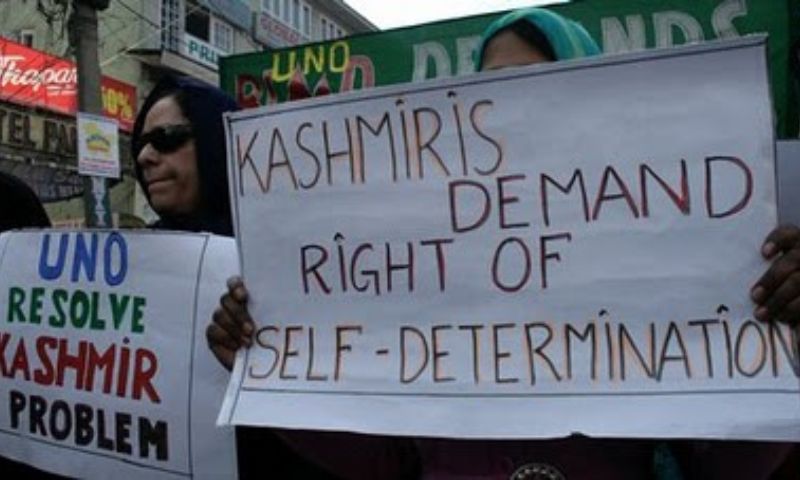SRINAGAR : The people of Jammu and Kashmir have been facing the worst Indian state terrorism since October 27, 1947, for opposing its illegal occupation of their homeland. October 27 is the darkest day in the history of Jammu and Kashmir. Kashmiris on both sides of the Line of Control and the world over observe it as a Black Day because on this day in 1947 India had forcibly occupied Jammu and Kashmir by landing its army in Srinagar against the will of the Kashmiri people and in total disregard to the Indian Independence Act and Partition Plan.
The Indian Independence Act and Partition Plan of 1947 led to the division of the Indian British Colony into two sovereign states – India and Pakistan. The Hindu-majority areas constituted India while the Muslim-majority areas of western provinces and East Bengal formed Pakistan. As per the understanding behind the Partition Plan, the-then Princely States were given the choice to accede either to Pakistan or India on the basis of their geography and demography. Being a Muslim Majority region, Jammu and Kashmir was a natural part of Pakistan as both shared strong bonds in respect of religion, geography and culture. But unfortunately, the Hindu ruler of Jammu and Kashmir, Maharaja Hari Singh, in connivance with the Indian National Congress and British leaders destroyed the future of Kashmiri people by announcing Jammu and Kashmir’s accession to India under a controversial document, Instrument of Accession, thus laying the foundation of the Kashmir dispute. Many neutral observers, including prominent British historian Alastair Lamb, deny the existence of such a document. They cite the reason in support of their stance that had it been there, India would have made it public at some national or international forum. Even the Indian Archives Department’s announcement that the document is lost has put question marks on its very existence.
Kashmiris opposed India’s illegal occupation of their motherland right from the day one and launched a popular uprising against it. Their exemplary struggle had led to the liberation of a vast area now known as Azad Jammu and Kashmir. Sensing a humiliating defeat, India knocked the door of the United Nations in January 1948, seeking its help for settlement of the Kashmir dispute. The UN Security Council adopted successive resolutions that nullified the Indian invasion and called for resolving the dispute through holding of plebiscite in Jammu and Kashmir to ascertain the will of the Kashmiri people about their political future.
The people of Indian illegally occupied Jammu and Kashmir waited for the implementation of the UN resolutions for decades. However, disturbed by India’s non-seriousness and intransigence to settle the Kashmir dispute, they intensified their struggle in 1989 to get rid of Indian illegal occupation. Despite killing over 96,200 Kashmiris, subjecting more than 8,000 to custodial disappearance, putting thousands in jails, molesting over 11,250 women and applying all brutal tactics, India has failed to suppress the freedom movement in occupied Jammu and Kashmir.
The people of IIOJK adding a new dimension to their freedom movement hit the streets in thousands during mass uprisings in 2008, 2009, 2010 and 2016. However, instead of respecting their aspirations and taking these massive demonstrations as referenda against its illegal occupation, India responded with brute force, killing hundreds and injuring thousands of protesters. Due to the use of lethal pellet guns by Indian troops after the mass uprising triggered by the extrajudicial killing of popular youth leader, Burhan Wani, on 8th July in 2016, more than 11,000 people suffered pellet injuries. Of these pellet victims, 2,000 have been hit in the eyes and around 200 of them have lost their eyesight in one or both eyes.

